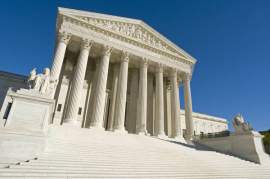
Constitution At A Glance

Popular In Constitution
Purpose Of Lifetime Appointment And Pros And Cons Enumerated Powers Bicameral Legislature Background Article 3 Of The Constitution We The People 1st Amendment Who Wrote The Constitution Judicial Review Equal Protection Clause Three Fifths Compromise 10th Amendment 5th Amendment
The first three Articles of the United States Constitution set up the Legislative, Executive, and Judicial Branches of Government that comprise the structure of the United States governing body. Article III of the Constitution deals specifically with the Judicial Branch of the United States Government, providing for the general architecture of the judicial system.
Section 1 of Article III states that there should
be a sole high court, the Supreme Court, that shall have the vested judicial
powers of the United States. However, it also provides for inferior courts to
help with the function of the judicial system and to allow for a better
structure to delegate judicial power.
It is of worthy note that the Constitution does not actually provide for an established number of judges to hold office in the Supreme Court. Article III only requires that there be only one Federal court. However, the number of Supreme Court Justices would be established later through additional statutes, setting the number at nine. There is one Chief Justice and eight Associate Justice appointed to the Supreme Court.
NEXT: Federal Judiciary Act of 1789





















